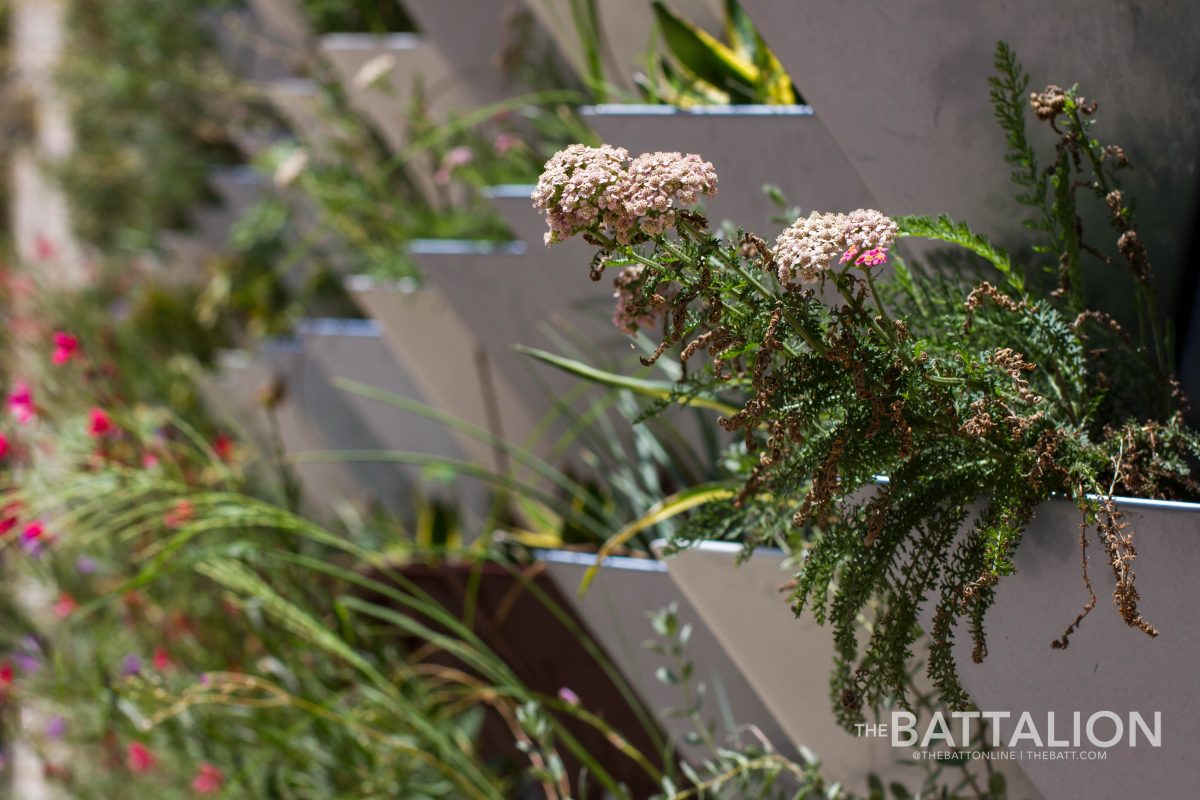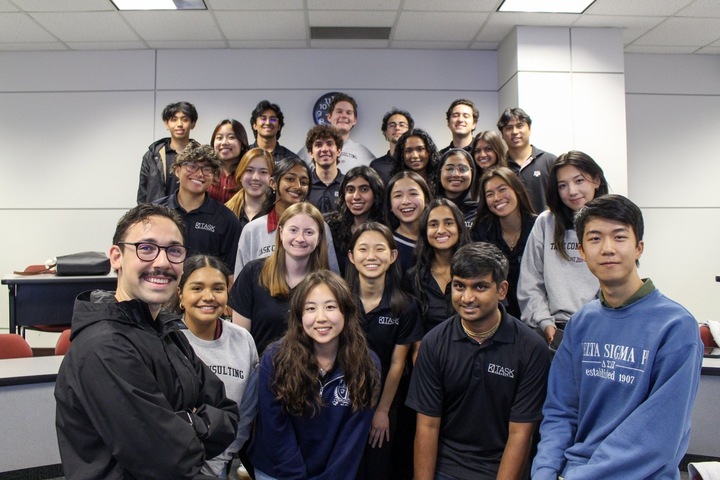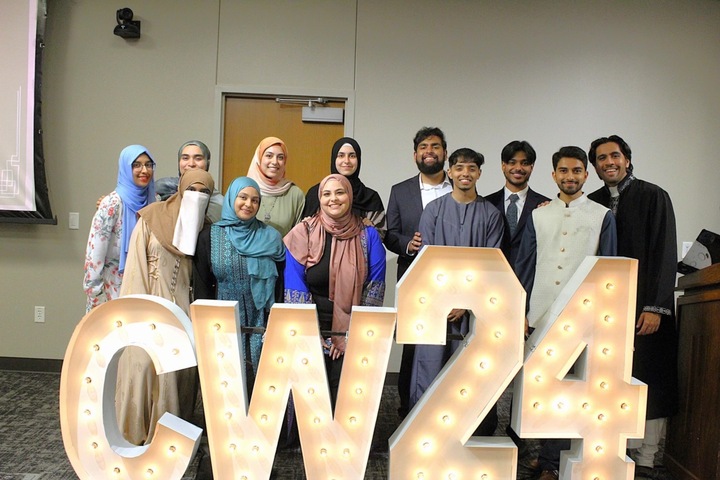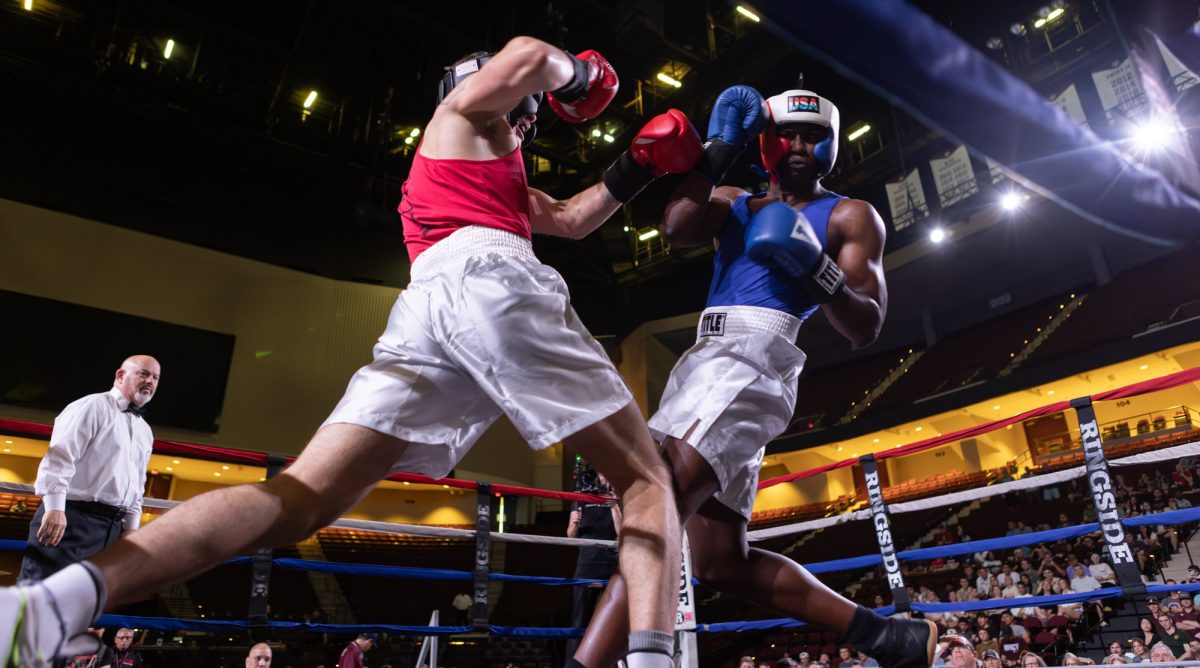Architecture students and staff teamed up over several semesters to build a Living Wall outside of the Ernest Langford Architecture Center, the first of its kind in Aggieland.
The wall is a product of the teamwork between assistant professor Ahmed Ali and associate professor Bruce Dvorak from the College of Architecture. The wall is constructed from 20 tons of sheet metal byproduct from the automobile manufacturing process donated by General Motors, and it houses native Texan plants that reduce the effects of heat in and around the building. The Living Wall was funded with the help of General Motors and the Tier One Program Grant from Texas A&M. Ali reached out to Dvorak once General Motors donated the scraps of metal used to build the modules that now make up the wall.
Ali has been teaching at A&M since 2015 and has always been interested in sustainability of materials that are sometimes considered as waste or excess.
“Resource-based design is looking at our available resources and design with its limitations and properties, instead of starting with abstract ideas and then later select materials without being environmentally conscious to the amount of solid waste that we generate everyday,” Ali said. “We are drowning into an unprecedented amount of waste, and design plays a very important role in diverting that waste from landfills.”
Before Ali and Dvorak began the project together, both worked separately on research. Dvorak had set up several green walls on the roof of Langford.
“None of the [previous] systems really survived for us, when Ahmed Ali came to me he said ‘we have this material… I think we can design a new kind of living wall system,’” Dvorak said. “So we got together with a couple students in the fall semester of 2017 and we worked with those students in terms of coming up with a design for the new system.”
The students then began working in 2018, by folding each piece of sheet metal in the A&M Automated Fabrication and Design Laboratory to create modules. They then painted the modules at a local auto body shop and filled them with soil and native Texan plants.
“The sheet metal is unique, I’ve never seen that used on a living wall before,” Dvorak said. “I think something else that’s unique is it’s designed for the plants to grow straight up so they have plenty of soil. We designed it for native plants of Texas – that was our goal for this project.”
Ali said he hopes to use the wall to remind students and faculty how easy and beautiful sustainability can be if people make room for it.
“Design thinking can transform what once was perceived as waste into beautiful and functional systems,” Ali said. “Sustainability must be both visible and beautiful to earn the public interest in raising the awareness of our environmental problems.”
Rooted in research
July 8, 2019
Photo by Photo by Meredith Seaver
Students assisted in research on the Langford roof, testing which native Texas plants could withstand extreme weather conditions. The Living Wall can be found spanning the side of Langford Architecture Building facing Building A.
0
Donate to The Battalion
$2065
$5000
Contributed
Our Goal
Your donation will support the student journalists of Texas A&M University - College Station. Your contribution will allow us to purchase equipment and cover our annual website hosting costs, in addition to paying freelance staffers for their work, travel costs for coverage and more!










